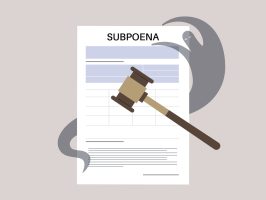Navigating the 6 month waiting period for California divorce means understanding how this mandatory timeline shapes when and how property division occurs. California law enforces this minimum waiting period to ensure both parties have time to negotiate and finalize the fair distribution of assets. For divorcing spouses, grasping the influence of this statutory rule is critical for protecting financial interests and ensuring legal compliance throughout the dissolution process.
Understanding the 6 Month Waiting Period for California Divorce
California law requires a minimum of six months from the time the divorce petition is served before a marriage can legally end. The 6 month waiting period for California divorce is not just a formality but a statutory safeguard allowing both parties enough time to reconsider, negotiate, and prepare for the realities of post-marital life. This timeframe cannot be shortened, even if both spouses agree on all terms, including those governing property division. The clock starts when one spouse is properly served with the divorce paperwork, not when they file the initial petition.
Why Does California Require a 6 Month Waiting Period in Divorce Cases?
The foundational reason for the 6 month waiting period for California divorce lies in promoting careful decision-making and the possibility of reconciliation. Lawmakers structured this period to act as a cooling-off stage, providing an opportunity for resolution, reconsideration, or amicable negotiation of property, debt, and custodial issues. In practice, this window is also crucial for spouses to conduct full disclosures, obtain appraisals, and negotiate settlements that will later be presented to the court.

The Role of the Waiting Period in Property Division Negotiations
Community Property Rules and the Division Process
California is a community property state. This means almost everything acquired from the date of marriage to the date of separation falls under community property and is subject to equal division. During the 6 month waiting period for California divorce, both parties are still considered legally married and can continue to negotiate the terms of dividing all marital assets and debts.
Disclosures play a foundational role during this interval. California law obligates each spouse to provide detailed records of assets, debts, income, and expenses. These “Preliminary Declarations of Disclosure” are exchanged early in the process and often supplemented before the divorce is finalized. Disputes over asset values or ownership can significantly slow proceedings, extending the process well beyond the mandatory waiting period.
Impact on Real Property, Investments, and High-Value Assets
It is during the 6 month waiting period for California divorce that property appraisals are conducted, retirement accounts are traced, and business valuations are debated when necessary. If, for instance, one spouse accrues investment gains during the period, those profits may be subject to division if considered community property. Similarly, debts incurred before the official date of separation may also be divided.
What Happens If the Divorce Extends Beyond Six Months?
While the 6 month waiting period for California divorce sets the minimum in which a divorce can be finalized, many cases take much longer. This is due to ongoing negotiations over complex property portfolios, unresolved disputes about asset valuation, or delays in reaching agreements about the division of pensions, retirement accounts, and tax implications. The court will not restore either spouse to “single person” status or allow remarriage until all terms are finalized and the six months have expired.
Timing of Property Division Agreements During the Waiting Period
Final Judgments Before and After the Waiting Period
Couples can reach settlements and file them with the court at any time during the 6 month waiting period for California divorce. However, the judgment cannot take effect until the statutory clock runs out. If the spouses resolve all property issues swiftly, the judge may sign the final judgment, but it will be held until the waiting period’s conclusion. Sometimes, one spouse may wish to finalize the process as soon as possible, submitting all documents before six months have elapsed; the court will wait until the period lapses before granting the divorce and implementing the property division.
Key Events That Occur During the Waiting Period
During the 6 month waiting period for California divorce, several legal events and requirements shape the path to property division:
Preliminary and Final Declarations of Disclosure must be completed and exchanged to ensure both parties have a clear picture of marital and separate assets.
Discovery, including subpoenas and depositions, can clarify income, asset values, or hidden property.
Real estate, business holdings, and investment portfolios are often appraised.
Litigation or mediation may address any disagreements about how to split property, retirement benefits, or responsibilities for debt.
The law is clear: spouses remain legally married until the court formally dissolves the marriage after the waiting period. Significant financial decisions, like selling marital real estate or transferring titles, may be delayed or complicated if attempted before the divorce is final.

Financial and Legal Ramifications of the Six Month Rule
Asset Accumulation During the Waiting Period
Any property or debt incurred by either spouse during the waiting period and before the formal date of separation may count as community property. This underscores the importance of a clearly established separation date when dividing property, especially if significant income, investments, bonuses, or debts are accumulated during this interim.
Marital Status and Tax Filing
Parties may not file taxes as “single” or remarry until official dissolution after the 6 month waiting period for California divorce and the court’s entry of judgment. For tax and financial planning, couples should seek legal and tax guidance to avoid unintentional misfilings or penalties. These legal nuances highlight the interconnectedness of marriage status, asset division, and financial obligations even after separation is initiated.
The Waiting Period’s Effect on High-Asset and Complex Divorces
Divorces involving business interests, blended assets, or substantial wealth typically require extensive discovery, multiple appraisals, or involvement of forensic accountants. The 6 month waiting period for California divorce is usually a baseline, as such cases routinely exceed this timeline because of complex property division negotiations or court calendaring delays.
What If the Parties Settle Early?
Even if spouses agree on every term of property division before or soon after filing, the court will not restore single status or make the property division legally enforceable until the 6 month waiting period for California divorce is over. This means early settlement is possible, but finality must wait for statutory compliance.
Community Property Versus Separate Property During Divorce Proceedings
Understanding the scope of what is considered marital property versus separate property shapes negotiations throughout the 6 month waiting period for California divorce. Typically, assets owned before marriage, gifts, or inheritances remain separate unless commingled with marital funds. For all other property, equal division is the rule. If parties disagree about what qualifies as community or separate property, the dispute may extend the process.
For more, refer to the official California Courts Self-Help Guide on property and debt: Property and debts in a divorce.
Judicial Approval and Property Division Finalization
At the conclusion of the 6 month waiting period for California divorce, provided all agreements are in order and all disclosures are complete, the family law judge enters the final judgment, restoring single status and formalizing property division orders. If outstanding disputes remain, the case may enter further litigation or trial on contested property issues.
To see a detailed resource specifically on this timeline and its implications, consult the comprehensive guide: navigating the six-month waiting period for California divorces.

Conclusion: Strategic Considerations During the Waiting Period
The 6 month waiting period for California divorce is a core feature of state family law, shaping how and when community property is divided. This unavoidable interval provides space for thorough financial disclosure, negotiations, mediation, and careful legal planning. Understanding its requirements and ramifications is vital for divorcing spouses seeking to secure a fair distribution of property while avoiding costly legal or financial errors.
Careful compliance with disclosure, negotiation, and timing ensures both spouses move into the next chapter on sound legal and financial footing. Consulting additional government resources and staying aware of judicial process changes will help any California resident going through the divorce process make informed property division decisions.



























